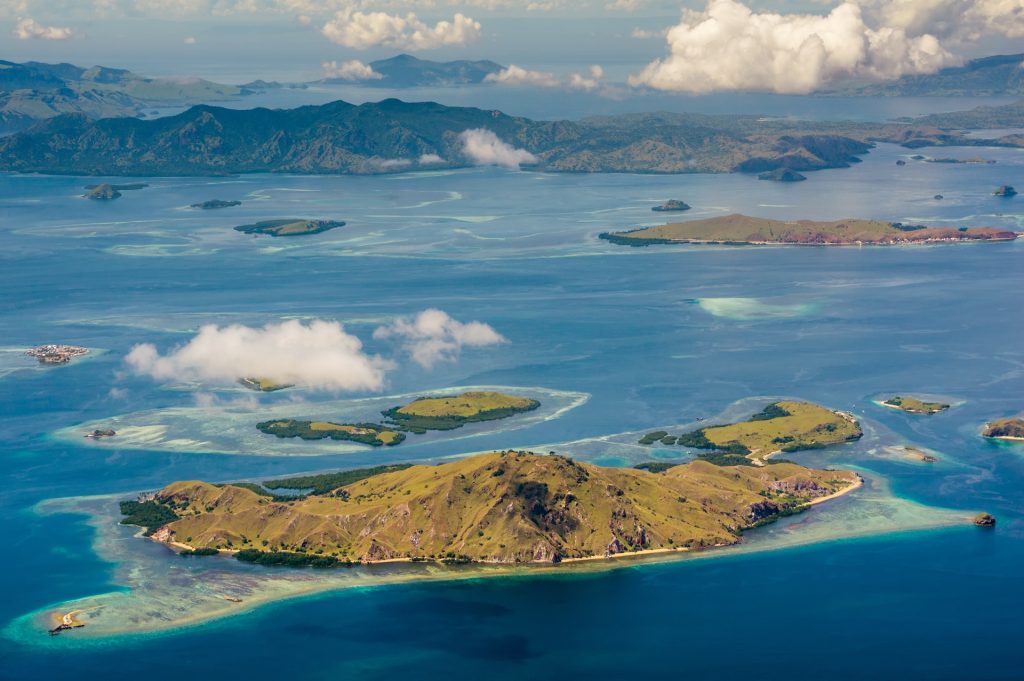What Are Marine Conservation Areas?
Marine conservation areas in Indonesia include both Marine Protected Areas (MPAs), which are formally designated by national authorities, and Other Effective area-based Conservation Measures (OECMs), which are often managed by communities, customary authorities, or private actors. Together, these form a national network of area-based marine conservation tools.
With over 17,000 islands, Indonesia, the world’s largest archipelagic nation, is home to one of the most biodiverse marine ecosystems on Earth. Its waters lie within the Coral Triangle, known as the “Amazon of the Seas”, and support an extraordinary variety of marine life, including coral reefs, seagrass beds, mangroves, and numerous fish species.
Indonesia has developed an extensive network of marine conservation areas. As of February 2025, more than 400 MPAs span 29.3 million hectares, covering about 9% of Indonesia’s territorial waters. These areas serve as critical sanctuaries for marine life, helping to maintain ecological balance, supporting sustainable fisheries, and protecting marine habitats for future generations.
They safeguard key ecosystems, including 1.2 million hectares of coral reefs (home to 75% of global coral species), 3.4 million hectares of mangroves (representing over 60% of global mangrove diversity), and 274,000 hectares of seagrass beds.
The Indonesian government, through the Ministry of Marine Affairs and Fisheries (MMAF), continues to strengthen marine conservation by implementing a range of area-based measures—including MPAs and OECMs—to achieve the national target of protecting 30% of Indonesia’s marine area by 2045.
The Conservation Areas Aim to
Protect critical habitats such as coral reefs, mangroves, and seagrass beds
Support the livelihoods of coastal communities through sustainable resource use and eco-tourism
Enhance coastal resilience against climate change impacts
Sustain fisheries by safeguarding nursery and spawning grounds
Marine Protected Areas (MPAs)
Marine Protected Areas (MPAs) are regions of Indonesia’s seas formally designated by a governmental authority where human activities are regulated to conserve biodiversity, protect ecosystems, and support sustainable use of marine resources. MPAs play a central role in safeguarding Indonesia’s marine heritage and ensuring the health of its oceans for future generations.
Currently, Indonesia’s MPA network covers more than 29.3 million hectares, contributing significantly to national and global marine conservation goals. These protected areas are vital not only for biodiversity conservation but also for ensuring food security, cultural heritage preservation, and economic well-being for millions of Indonesians who depend on the sea.
Management of MPAs involves collaboration between the government, local communities, NGOs, and the private sector. Ongoing efforts focus on strengthening governance, improving management effectiveness, and integrating traditional ecological knowledge with modern science to achieve long-term conservation success.
 Aerial view, Komodo Island, Komodo National Park, Indonesia, Indian Ocean, Asia
Aerial view, Komodo Island, Komodo National Park, Indonesia, Indian Ocean, Asia
Other Effective area-based Conservation Measures (OECMs)
Other Effective area-based Conservation Measures (OECMs) are designated areas that achieve effective conservation of biodiversity, even if conservation is not their primary goal. In Indonesia, OECMs play a vital complementary role to MPAs by recognizing and supporting marine areas outside formal protected systems that contribute significantly to biodiversity. Examples include customary marine management systems such as Sasi Laut (Maluku), Panglima Laot (Aceh), Awig-awig (Bali), Lubuk Larangan (West Sumatra), and Mane’e (North Sulawesi). They also include community-managed fisheries, sacred sites, military zones, and private conservation initiatives that deliver biodiversity outcomes.
Sasi Laut
Sasi laut is a traditional customary marine management system practiced in Maluku and other parts of eastern Indonesia. The word sasi refers to local rules or prohibitions imposed by communities to protect natural resources—including marine areas—for a specific period.

Research has identified 650 marine OECM Candidate and Potential OECM units across Indonesia, covering an area approximately equivalent to 3% of the national 30% target. These areas are led by government, customary, community, or private sector actors, with diverse management objectives such as habitat protection, traditional practices, fisheries, tourism, and more.
Key challenges for OECM implementation include the need for formal recognition mechanisms, technical capacity for identification and reporting, better integration with national conservation plans, and balancing diverse management approaches while maintaining the flexibility that makes OECMs effective.